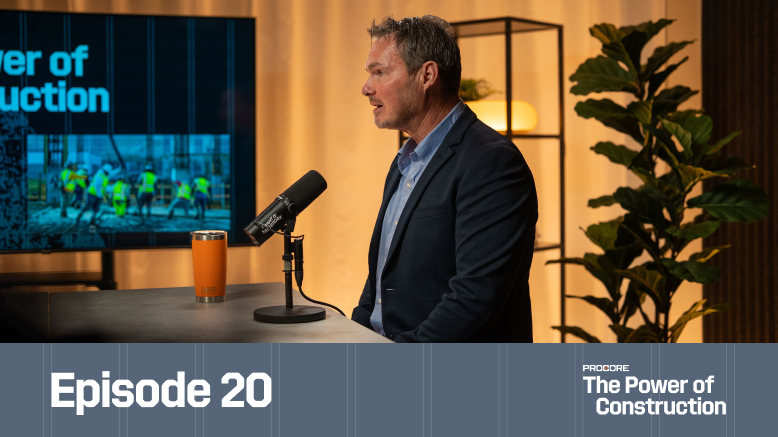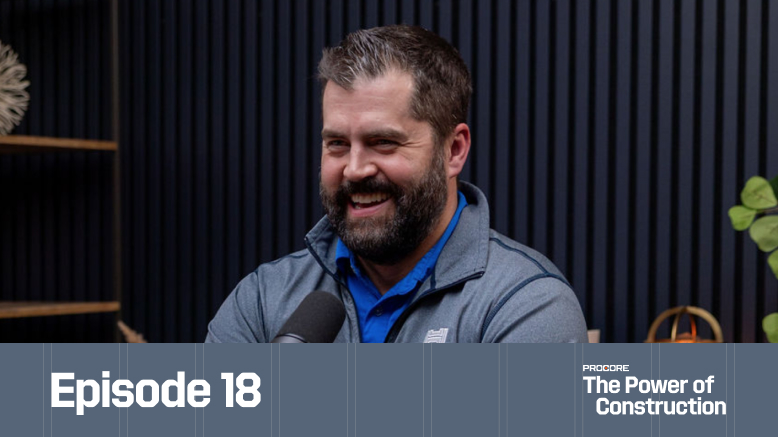— 6 min read
Construction Risk Management: 5 Steps to Reduce & Mitigate Risk

Last Updated Aug 15, 2025
Dawn Killough
34 articles
Dawn Killough is a writer with over 20 years of experience in construction, having worked as a staff accountant, green building advisor, project assistant, and contract administrator. She holds a BA in Psychology and MS in Conflict Resolution, both from the University of Portland. She shares fundamental green building strategies and techniques in her book, Green Building Design 101. Dawn lives in Portland, Oregon.

Kristen Frisa
Contributing Writer
111 articles
Kristen Frisa is a contributing writer for Procore. She also contributes to a variety of industry publications as a freelance writer focused on finance and construction technology. Kristen holds a Bachelor of Arts in Philosophy and History from Western University, with a post-graduate certificate in journalism from Sheridan College. She lives in Ontario, Canada.
Last Updated Aug 15, 2025

Construction is a risky industry, with one of the highest rates of business failure of any economic sector. In every decision they make, business owners and executives attempt to maximize margins and minimize risk — and the potentially devastating losses that exposure invites.
Construction risk management is a proactive process that attempts to name all the potential pitfalls that could occur on a project and decide how to deal with them before they occur, with the goal of improving decision-making and limiting the impact of any risk that does occur.
This process of risk management is a necessary process for every construction business to ensure that their company is successful and able to thrive for years to come.
Table of contents
What is construction risk management?
Construction risk management is the process of identifying potential risks, evaluating the size and likelihood of their impact, and implementing procedures to mitigate their financial effect on the business. Through this strategic process, construction firms can predict and minimize the likelihood of — and loss from — undesired events, while maximizing the rewards.
While the process involves a variety of tools, the foundation of any successful construction risk management program is built on data. Risk data comes in many forms, from internal cash flow statements to jobsite safety analyses to industry and economic reports. A company's ability to simultaneously maximize business results and minimize risk is directly tied to its ability to collect and analyze data on past performance — and continually look for lessons in its own history.
The 5-step Construction Risk Management Process
Risk management is an extremely complex topic, but the general process is the same regardless of the business scale. At its core, the construction risk management process includes identifying risks, assessing potential impact, controlling them, financing potential costs, and seeking to recover damages when a loss occurs.
1. Identifying Risks
The process of identifying risks involves asking the question: What risks are presented by the project or customer? A risk is any threat that creates potential loss exposure. While risk can be categorized in many different ways, these are six common types of risks that construction companies need to identify.
Key Types of Risks on Construction Projects
Financial Risk
Financial risks — events that interrupt cash flow — can threaten project outcomes and future business success for the contractors involved. Slow payments, spiking construction costs, fraud and other financial factors can squeeze cash flow and disrupt growth. This category includes credit risk and liquidity risk, among others.
Safety Risk
Construction is a dangerous industry, with high rates of injury and death from jobsite accidents. Safety risks are elements that can threaten the construction crew. Mitigating those risks involves creating and sticking to a safety management plan to keep everyone free from harm.
Operational or Project Risk
Schedule delays, workforce interruptions, lack of funding, equipment failures and environmental conditions like hurricanes have the potential to derail business objectives.
Economic Risk
Recessions, inflation, and other economic forces can shrink market opportunities, drive up construction costs — and dry up project funding.
Contractual and Legal Risk
Construction is both a heavily regulated and a highly litigious industry. Legal risks include lawsuits, regulation or code violations, and contract disputes over scope, payments, costs or time constraints.
Political Risk
Of particular concern to global construction firms and companies that work on government projects, political risks include acts of terrorism, civil unrest, or simply political changes that affect project timelines, funding, and worker safety.
Figuring out which types of risk apply to the project at hand should be done early in the preconstruction process of a new project. Project teams should involve multiple stakeholders and past project data to illuminate the risks. The goal is to name any risk that could apply to the project so that they may be dealt with proactively.
2. Risk Analysis
After identifying risks on the project, the next step is to determine the frequency, probability, and severity of these potential risks. This involves asking several questions:
- "What is the worst that could happen?"
- "What is the likelihood of that event?"
- "How much would we lose if it occurred?"
During the assessment of the project, the company determines the probability of a loss event and the severity of the damages.
Recording tracking project and financial data is a key component of assessing risk. The more historical data a company has to analyze, the more accurate its risk assessment will be. A contractor bidding on their first hospital project will have a much less accurate picture of their risk than a contractor with 10 years of performance, safety and financial reports on hospital projects.
3. Risk Mitigation
A company has four potential responses to an identified risk: accept it, avoid it, control it, or transfer it.
Accept the risk.
Certain risks are deemed acceptable — the cost of pursuing a valuable opportunity.
Avoid the risk.
This may involve changing the scope of work or declining the contract entirely.
Control the risk.
A business can implement measures to reduce the likelihood of a loss event, and/or mitigate its impact on the company. For example, a contractor may choose to protect lien rights with high-risk customers, or on projects of a certain size to reduce the impact of a missed payment.
Transfer the risk.
A contractor can pass the risk on to another party through the construction contract or with an insurance program.
4. Contingency Planning
When a loss occurs, the company should seek to recover damages and limit. Loss recovery and mitigation can take a number of different forms, including:
- Filing an insurance claim
- Filing a mechanics lien or payment bond claim
- Sending accounts to collections
- Filing a lawsuit
- Declaring bankruptcy
A construction company's risk management program should include policies and procedures for loss prevention and recovery when needed.
5. Monitoring and Control
Contractors need to conduct periodic reviews of their risk management program — analyzing both successes and failures — and update the process with lessons learned.
Benefits of Construction Risk Management
The construction risk management process costs valuable time and effort during the preconstruction phase of a new project, but the effort is worth it in the long term. Here are some of the key benefits of conducting a risk management assessment.
Reduced Delays and Cost Overruns
It’s not likely every risk the team identified will be one it encounters on the project. However, when one of the risks identified does come up, the team has already decided on the best course of action to take to limit or mitigate the situation. Action can be taken faster, and the project can get back on track quickly, limiting delays and additional costs.
Improved Safety
Having named specific safety risks as part of the risk assessment, the team can implement a tailored approach to safety protocols on the project, thus improving outcomes.
Boost in Client Satisfaction
Clients and contractors alike can feel more confident in the project’s outcomes, because the team has prepared for any potential curveballs.
Increased Project Success
Project teams that undertake to complete risk assessments improve their overall outcomes. Preparation allows the team to act quickly to limit profit losses when the unexpected arises. Further, the exercise of risk management can allow teams to improve their processes to avoid risks in the first place. than when projects take losses head-on.
Go beyond OSHA regulations.
The Procore Safety Qualified program provides construction professionals with everything they need to know to create a culture of safety.

Continued construction risk management practices lead to improvement over time.
Construction risk management is a process that requires constant improvement. Any risk management program should adapt to reflect past performance as well as changes in the industry overall.
The landscape of risk in construction today looks much different than it did even 10 years ago. The building industry of tomorrow will bring new risks — and new strategies to manage and mitigate them.
Was this article helpful?
Thank you for your submission.
96%
4%
You voted that this article was . Was this a mistake? If so, change your vote
Scroll less, learn more about construction.
Subscribe to The Blueprint, Procore’s construction newsletter, to get content from industry experts delivered straight to your inbox.
By clicking this button, you agree to our Privacy Notice and Terms of Service.
Thank you!
You’re signed up to receive The Blueprint newsletter from Procore. You can unsubscribe at any time.
Categories:
Written by
Dawn Killough
34 articles
Dawn Killough is a writer with over 20 years of experience in construction, having worked as a staff accountant, green building advisor, project assistant, and contract administrator. She holds a BA in Psychology and MS in Conflict Resolution, both from the University of Portland. She shares fundamental green building strategies and techniques in her book, Green Building Design 101. Dawn lives in Portland, Oregon.
View profile
Kristen Frisa
Contributing Writer | Procore
111 articles
Kristen Frisa is a contributing writer for Procore. She also contributes to a variety of industry publications as a freelance writer focused on finance and construction technology. Kristen holds a Bachelor of Arts in Philosophy and History from Western University, with a post-graduate certificate in journalism from Sheridan College. She lives in Ontario, Canada.
View profileExplore more helpful resources

Why Don’t We Protect the Whole Person?
Behind every safety incident is a person — and behind that person is a story we rarely ask about. Were they already exhausted before they arrived on site? Did they...

What Drives Better Safety Outcomes—Carrot, Stick, or “Zero Harm”?
On paper, construction has never looked safer. In reality, mental health claims are rising, workers are disengaged and the compliance playbook is broken. Garry Mansfield, co-founder of Scratchie, argues the...

How Close Are We to Bridging the Design-Build Divide?
For decades, construction decisions have often been made based on gut instinct. But what if the real barrier to transformation isn’t technology—it’s the divide between design and construction? In episode...

Gain Without Pain: Leveraging Technology for Strategic Safety Programs
In safety, there is always room for improvement, and technology creates the ability to scale safety programs that drive risk mitigation, operational efficiencies and competitive advantage. In fact, builders who...
Free Tools
Calculators
Use our calculators to estimate the cost of construction materials for your next project.
Templates
Find a template to help you with your construction project tasks.
Material Price Tracker
Get the latest U.S. retail prices and view historical trends for common building materials.
Glossary
Explore key terms and phrases used in the industry.
